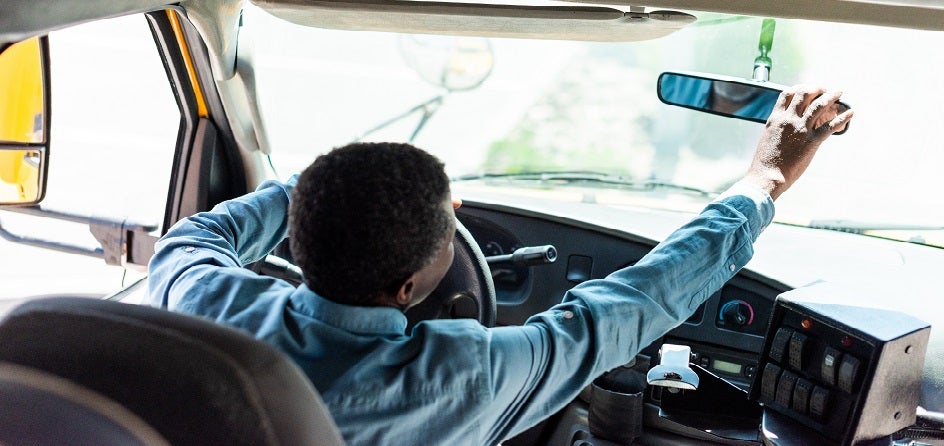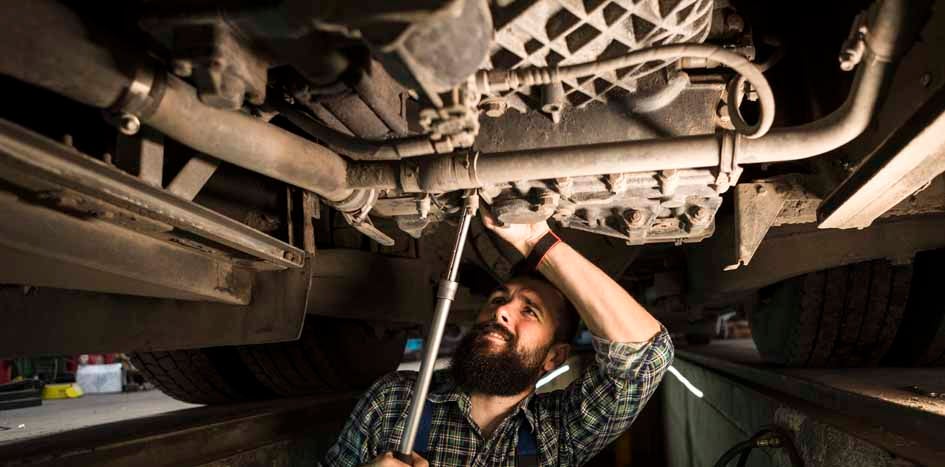Put Backing Accidents in Your Rearview Mirror
It seems regulatory agencies and the auto industry are on a mission to protect drivers from themselves. Consider a simple maneuver such as backing up. Rear-vision cameras, warning sensors, and reverse automatic braking are designed to prevent backing accidents.
If your district or community college isn’t outfitted with the best tech-powered safety features money can buy, you’re not alone. That doesn’t mean you have to accept backing accidents as an inevitable byproduct of the educating students.
Shining Light on the Issue
Improper backing represents the leading cause of physical damage claims among Fund members with Auto coverage. Common causes include drivers backing too quickly, neglecting to check their mirrors carefully, and failing to notice fixed hazards such as light poles. From a big-picture perspective, about 10,000 Texans cite unsafe backing as a factor in vehicle collisions every year, according to the Texas Department of Insurance (TDI). Tragically, drivers aren’t just backing into inanimate objects.
Backing Accident Basics
The correlation between vehicle size and blind spots puts buses, SUVs, and tractor trailers front and center in backing accident prevention campaigns. Remember, however, that administrators and teachers who get behind the wheel of sedans are also at risk. Your driver safety program should require employees to follow these basic best practices.
Avoid Backing Up
The most effective way to control exposure to a risk is to eliminate the risk. You can’t always avoid backing up, but you can:
- Maintain a safe following distance. If the vehicle in front of you breaks down, you won’t have to back up to go around.
- Stop behind the lines. It’s the law, and it eliminates the need to back up and make room for crossing vehicles or people. Making sharp turns while driving a bus or hauling a trailer is difficult. By stopping behind the lines, you give yourself room to turn so you don’t have to back up.
- Look for pull-through parking spots. If there are none, back into traditional parking spots.
- Plan routes strategically. Route buses around the block to avoid turnarounds when possible. Remind bus drivers to be careful when navigating cul-de-sacs, apartment complexes, and other tight spaces.
Put Distractions Away
In the time it takes to glance at a text message, take a bite of your sandwich, or check your hair in the mirror, you could overlook a mailbox, parked car, or pedestrian behind you. Put distractions away and focus on your most important job: driving.
Employers should include distracted driving best practices in their policies and procedures. For example, you could require drivers to pull over to a safe place if they need to use their phone.
Look and Listen
Familiarity can breed unsafe behavior. It doesn’t matter if you’ve backed out of your assigned spot in the faculty parking lot thousands of times without an incident. Every situation is unique. Monitor your surroundings every time you back up:
- Check your surroundings. Walk around the vehicle and check for children, animals, and other hazards that might escape your mirrors. Get back in the vehicle quickly, allowing as little time as possible for conditions to change.
- Open the windows. You need to be able to hear other vehicles, pedestrians, and cyclists.
- Reduce blind spots. Properly adjusted mirrors help reduce blinds spots, but remember that mirrors can compromise your depth perception. The same goes for backup cameras.
- Use your head. Supplement mirrors and back-up cameras by turning your head over your right shoulder and looking out the rear window. Back up slowly, keeping your foot over the brake.
Special Considerations for Large Vehicles
At approximately 40 feet long, eight feet wide, and 23,000 pounds, school buses are physically larger than most vehicles in your fleet. They also have big blind spots that can extend up to 200 feet directly behind the bus. Forklifts, backhoes, tractors, dump trucks, and trailers are similarly big, bulky, and blind-spot heavy.
Large vehicles also handle differently than sedans, SUVs and pickup trucks. For example, when backing a trailer attached to a truck, the driver turns the wheel the opposite direction they want the trailer to go.
Ensure Adequate Clearance
Before backing, check for low-hanging tree limbs, electrical wires, and other hazards that could hit the top of tall vehicles.
Get Help
Spotters who understand how the vehicle handles can serve as an extra set of eyes for drivers with limited visibility:
- Use two spotters if you need to back up near pedestrians or other traffic.
- Communicate with cell phones or walkie talkies, or agree on hand signals for back-right, back-left, and stop.
- Position spotters to the side of the point where you want to end up.
- Keep spotters visible in your sideview mirrors. Stop backing if you lose eye contact.
Protect Foot Traffic
Heavy equipment is typically operated near children or co-workers on the ground. Drivers and pedestrians share responsibility for preventing back-over accidents.
- Establish an internal traffic control plan on job sites.
- Turn backup alarms on, and give short, continuous horn beeps as you back so you get others’ attention.
- Look behind you before backing up.
- Never assume pedestrians or bystanders are aware of heavy equipment and your intended direction of travel.
- Require employees on foot to wear high-visibility clothing.
What Else Can Employers Do?
Training is a core element of driver safety programs. Your program should specify which training employees need before they operate vehicles and machinery. Training should include a skills test with a minimum passing score.
Document all training, supplemental resources, and test scores. The Fund recommends members keep training records at least five years after the employee is no longer with the organization.
For more information about reducing the risk of backing accidents, download this TDI resource. Fund members who want more expert advice can contact your risk solutions consultant today.

David Wylie
David Wylie serves as content developer on the risk solutions team. He brings more than 20 years' experience writing educational content that helps employers protect against workplace accidents, property damage, cybercrime, and other losses.
You May Also Like…
View All Related Insights
The Basics of School Fleet Management
Your community relies on your district's vehicles, so take care of your buses, trucks, and cars with these fleet management basics.

Protect Your Fleet With a Preventative Maintenance Plan
If you want to protect your vehicles and their passengers, you need an effective preventative maintenance plan.

Breaking Down Entry Level Driver Training Requirements
Federal entry level driver training requirements apply to CDL holders, including bus drivers. Do these four things to help your schools comply.

Catalytic Converter Theft Prevention Made Simple
These catalytic converter theft prevention tips can save schools thousands of dollars in unbudgeted costs.
